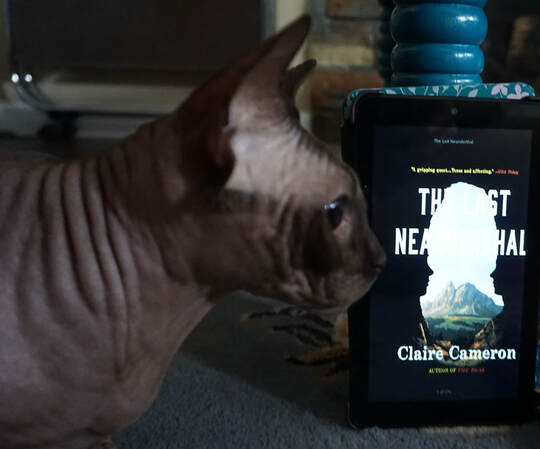|
Masks, but not those masks, are a staple of secret identities. (Photo from Unsplash by Julio Rionaldo) It’s been a while since my last trope discussion, so I thought it was time for another! This week I researched a super popular trope, secret identities. Get it? Super. Like super heroes.
Where Did This Start? I started by reading about secret identities on TV Tropes. There are about thirty-two related tropes, including someone falling in love with the hero identity, or loving the hero and hating the secret identity (or vice versa), and more. So many tropes that the original idea of secret identities must be incredibly old. Indeed, it is. You can see secret identities in fairy tales, like Cinderella (at the ball, though in most versions this identity doesn't get a name) and Beauty and the Beast (the secretly beautiful witch who turns the prince into a beast), and Mulan (in the army). TV Tropes cited a medieval Scottish story, Roswall and Lillian, as an example in which a steward steals Prince Roswall’s identity and plans to marry Princess Lillian. Roswall, of course, succeeds in getting the Princess in the end when his secret identity (which is his original one: a prince) is revealed. Even in Greek myths, gods would hide their identities and interact with humans. Technically speaking, secret or hidden identities are such an old concept in storytelling that we can’t quite pinpoint a true origin. What about a secret identity for unsanctioned acts of heroism? That’s more specific. One could argue Robin Hood was almost there, but since it was clear to everyone involved that he was Robin of Loxley, his identity doesn’t qualify as secret. Let’s look at some others: Superman (aka Clark Kent) made his first appearance in a short story, The Reign of Superman, in 1933, published in a science fiction magazine. Most people know him better from his second appearance, which was in 1938 in Action Comics #1 from DC Comics. Zorro (aka Diego Vega) made his first appearance in 1919 in a series of magazine instalments later brought together as the novel The Curse of Capistrano by Johnston McCulley. Zorro got his first movie in 1920 (a silent one, but it still counts!) The Scarlet Pimpernel (aka Sir Percy Blakeney) appeared in a play named for the hero in 1903 (and novel in 1905) by Baroness Emma Orczy. The Scarlet Pimpernel saved aristocrats from being beheaded by mobs after the French Revolution made that seem pretty fashionable. His public persona is a rich, stylish, but seemingly useless man that no one would suspect of being a swordsman. Is saving rich people terribly heroic? I suppose it would be to the rich people. At least the concept is right for my purposes here. At 1903, The Scarlet Pimpernel is the first clear example of a character consistently using a secret identity to perform acts that are heroic. I was surprised to learn this secret hero genre was pretty much solidified in the literary world by a woman author. Hats off to the Baroness! Why Have Secret Identities? After that deep dive, I asked myself why did these characters hide their identities? Modern heroes do it to avoid their enemies and/or protect their loved ones. Older heroes did this as well, though there was often an air of vigilantism to those stories, where the secret identity would suffer legal consequences if they were found out. Other, less vigilante-focused instances of secret identities also protected characters from social consequences (Cinderella, Mulan) or allowed more freedom (Mulan, Zeus). Still others weren’t the character’s choice (Roswall). Plenty of character motivations available to meld or co-opt for your own story. Should Your Characters Have Secret Identities? It’s all dependent on your plot with this one. A super hero book may obviously require a clear secret identity to be effective. However, going undercover in a crime novel, using a fake ID in a contemporary novel, or masquerading a monster as human in a horror could all also qualify as secret identities. The most important thing is to be sure your reader can follow with what’s going on. If you don’t clearly connect identity 1 to identity 2, your reader may not know who’s behind the metaphorical (or real) mask and get completely lost. While a TV or movie has the actor, or at least their voice, to help guide the audience, you have to be more deliberate. One trick is to ensure you don’t introduce an entire team at once, but build it slowly to allow the reader to remember who is who. That’s it for this trope discussion. Who is your favorite hero with a secret identity? Have you written any secret or false identities in your work? Let’s discuss in the comments! Here are some sources for more reading on this topic: TV Tropes article about Secret Identities Wikipedia article summarizing The Scarlet Pimpernel Wikipedia article summarizing Zorro Wikipedia article about Action Comics #1 More about Baroness Emma Orczy
0 Comments
Clue's best impression of the book cover. Photo by Kate Ota 2021 Content warning: incest, infant death
I don't typically do so many book reviews in a row, but in five weeks of commuting, I've read five books. Nearly six. So, you'll be getting book reviews for a while. I'll do my best to switch it up next week! The Last Neanderthal by Claire Cameron is an adult dual POV book. The first is one of the last living Neanderthals (we’ll call it 40,000 years ago) and the second is approximately modern day. The main POV belongs to the Neanderthal, Girl, who, as the title suggests, becomes the last Neanderthal, or at least one of the last. And you know that fact as her family dies off in various accidents. She is left with one adopted sibling, who you realize pretty quickly is not a Neanderthal. She must take care of him as they attempt to find other Neanderthals. The second POV is a modern researcher, Rose, who races against her pregnancy to finish a digging up a Neanderthal skeleton. Her chapters were few and far between, but showed the problems that modern women still face in the workplace, especially academia. Rose also had marital strains with her long-distance husband. I had a couple problems with the book. The Neanderthal chapters went a little too far on the altered linguistics for my taste. There was also little dialogue, which the author gave evidence for, but it made it a less enjoyable read. I also did not appreciate the incest scenes. Yes, it probably happened as that species died off. No, I don’t want to be entertained by it. Rose’s modern POV didn’t get enough page space, even though it was interesting. I supremely disliked Rose’s relationship with her husband. The book covered the discoveries about Neanderthals (through its pub date, 2017) very well. It felt more realistic to my understanding than other pieces of media I won’t name. It also seemed to do justice to the realities of an archaeological dig and the slow pace. Overall, it was fine. It felt realistic, but maybe too much so with the incest. Readers who are interested in ancient humans or archaeology may enjoy it. It would probably appeal to fans of Clan of the Cave Bear (lots of parallels between the two). It is not for you if incest or infant death is triggering or not your taste. It’s also not for you if you want high action or a quick pace. Have you read The Last Neanderthal? Did you enjoy it? What other Neanderthal books are worth reading? Let’s discuss in the comments! |
Archives
April 2024
Categories
All
|



 RSS Feed
RSS Feed